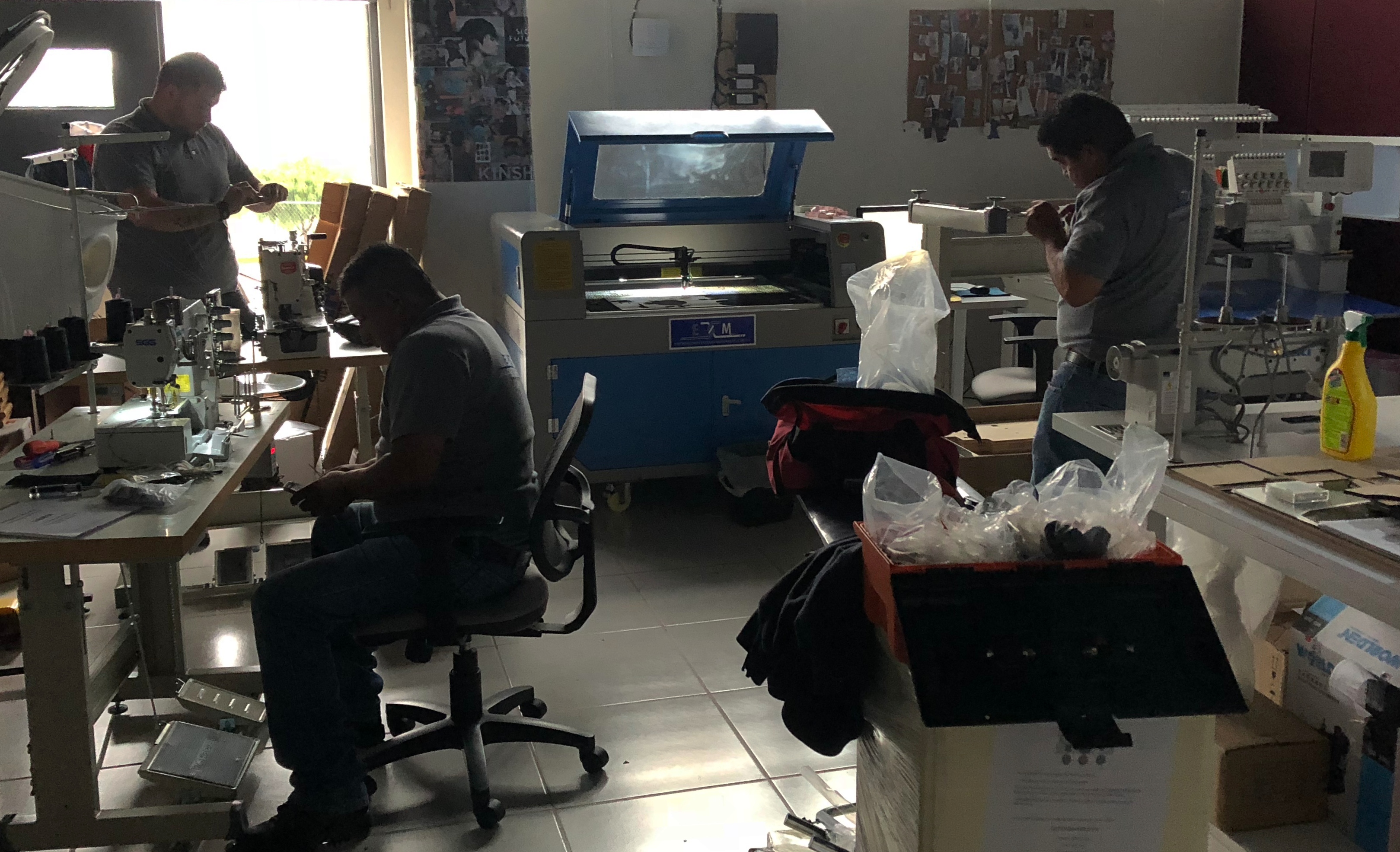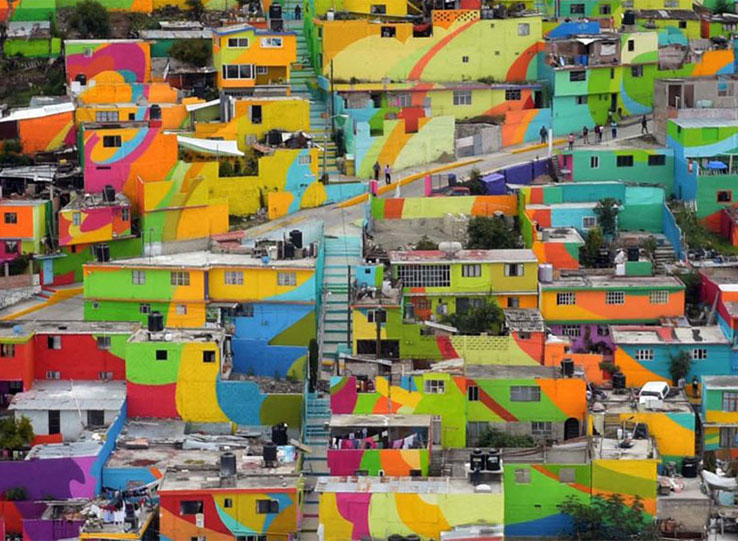When you do a Google search of Pachuca, Mexico, one of the first and most prominent images that repeats itself through the algorithmic results is a picture of two hundred homes whose facades collectively make a large mural that bathes one of the city’s hillsides in saturated hues. A large project completed in 2015 by the artist collective known as the German Crew, this project required the participation, collaboration, and willingness of an entire community to produce.
While this image hardly reveals the complex intricacies of the city of Pachuca, for me it seems poignantly reflective of a vibrant community, one that embraces the arts as connective vehicle, an investment in strengthening relationships among its residents, and has an interest in new and visible partnerships.
Living in Southern California, Mexico is less than three hours from my front door. One could spend just as much time sitting in daily traffic in LA as they could to transport themselves to another country that we neighbor. As an artist and full-time educator living in this area, I feel a part of me has already been made welcome by Pachuca, a city I have not yet visited.
Friends and students in my classroom have extended offerings of connections to family members who live in this area, and a part of me already feels that I have been touched by this city before even setting foot there, and I anticipate (and hope) that Mexico as my now neighbor, through these connections in my classroom and community in Long Beach, California, will soon feel like a second home.
While in Pachuca, I will be working with CITNOVA (Council of Science, Technology and Innovation of Hidalgo), a local institution whose main goals are to promote the integration of science, technology, and innovation into the local community. Through this collaboration, I will be working with members of the community to implement four workshops that explore art and tech based projects that address issues of cultural identity.

Makerspace at CITNOVA. Photo by Maya Holm.
The root of my teaching philosophy is engaging others in becoming active, autonomous, and critical contributors to the arts and their communities through the use of different technology-based platforms and tools. I hope to encourage new tools as methods of collaborative exploration to address these complex issues. In this specific role, I am acting as a facilitator to teach new approaches to creative production through specialized tools. We will be utilizing CITNOVA’s makerspace which houses 3D printers, laser cutters, and CNC milling machines among other specialized tools.
My art practice has always functioned as a vehicle that blends together scientific exploration, emergent digital tools, and traditional sculptural practices to produce works that explore metaphorical relationships between human and nature based systems, but rarely moves into personal spaces addressing issues of cultural identities. This will be a new and exciting challenge from which I will learn a great deal through participants' diverse histories and stories made present through these explorations.
For me, technology’s role in this context (even as technology continues to always shift, change, and evolve) is to augment and create a bridge between traditional methods of production to new trajectories in making that ultimately create new conversations and physical works that can act as a creative envoy to address issues of cultural identity and personal narrative/ideas. I am most humbled and excited to begin exploring these ideas and ultimately build connections and relationships with participants as we begin a journey of new tools and new outcomes.
